
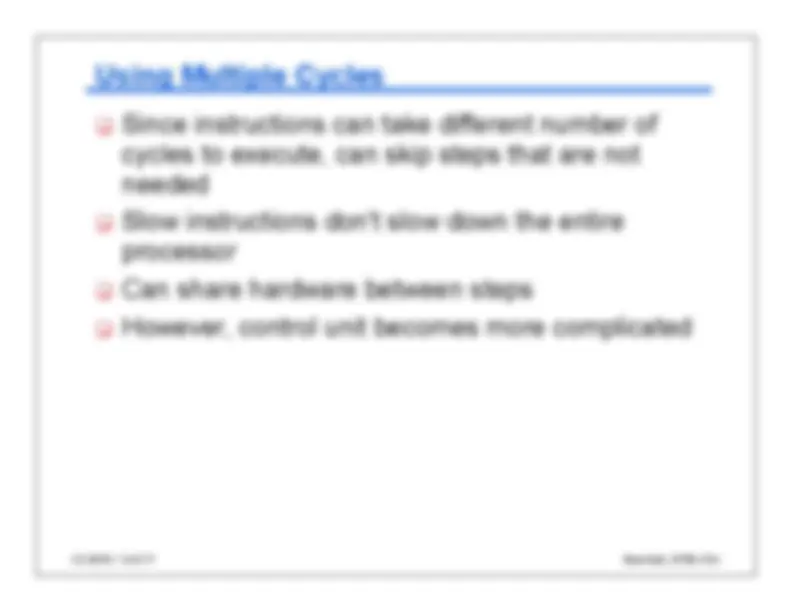
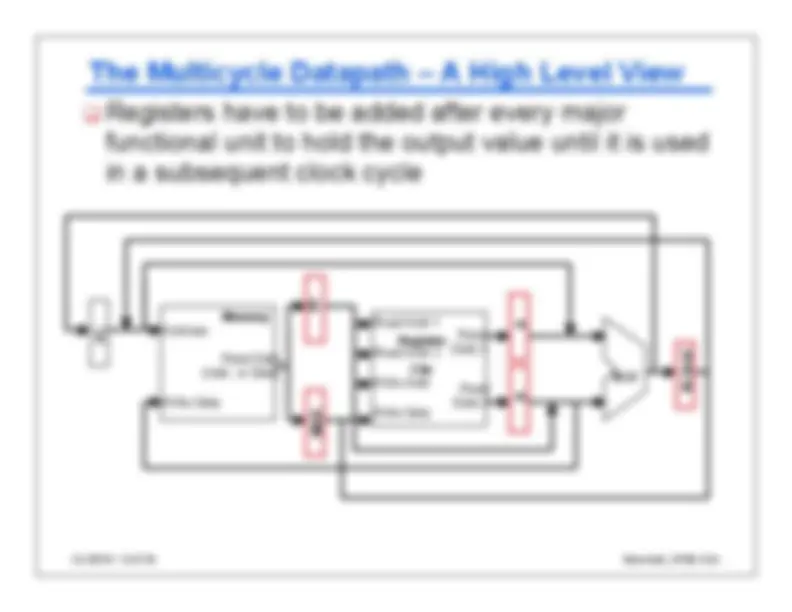
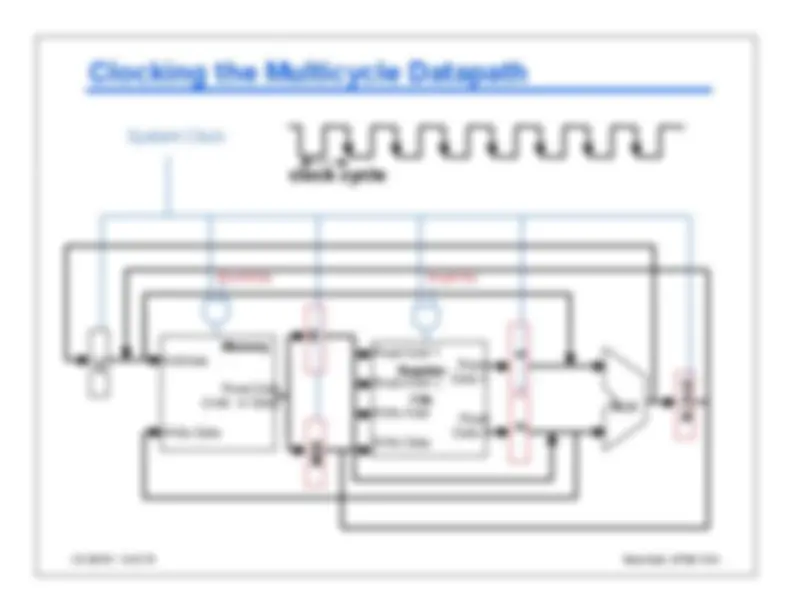

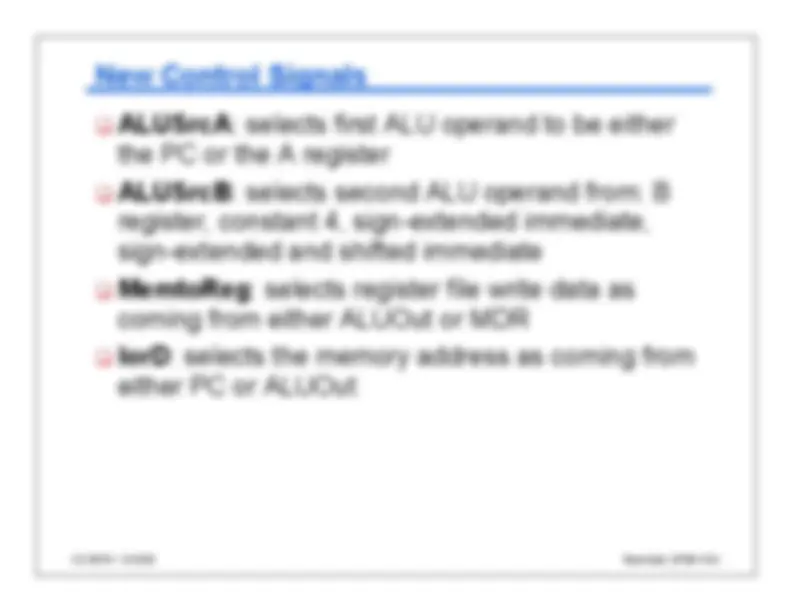
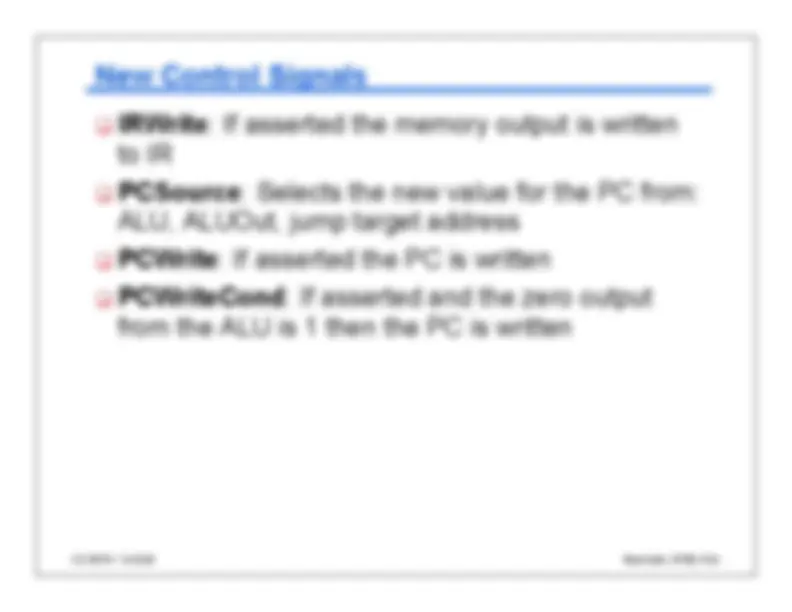
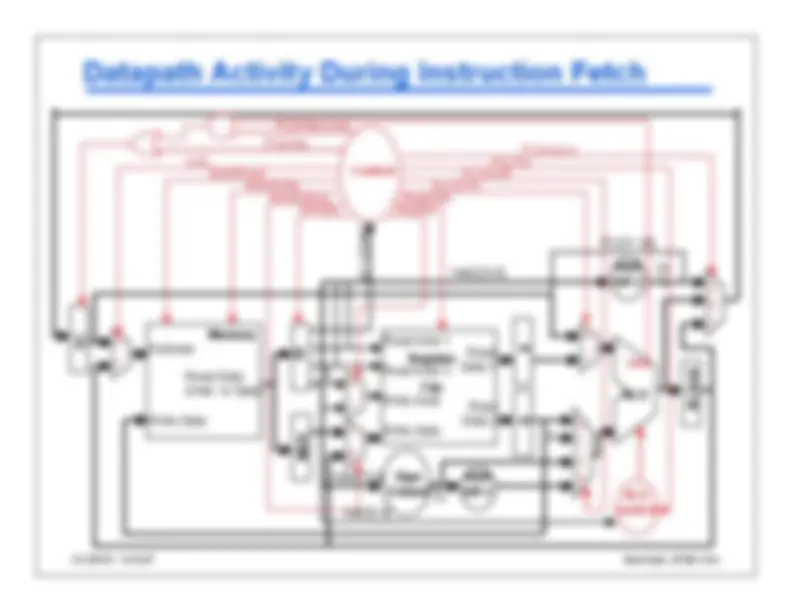
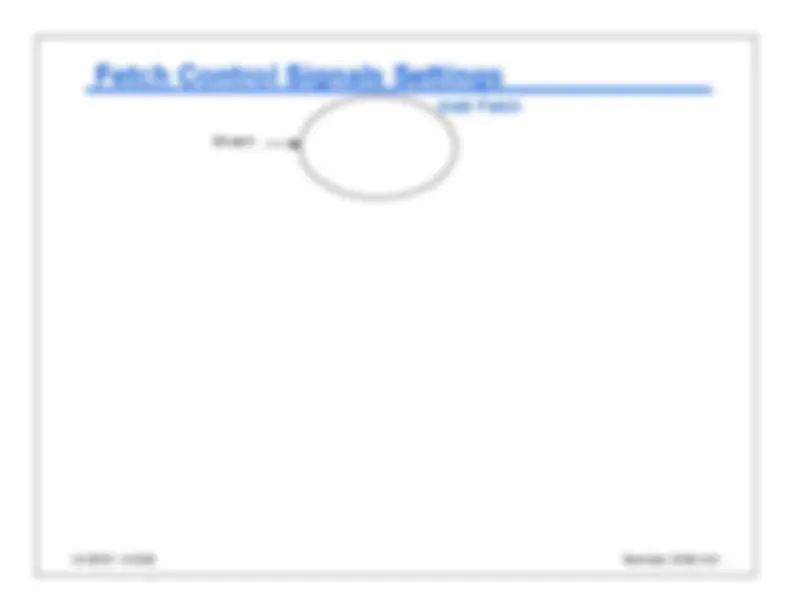
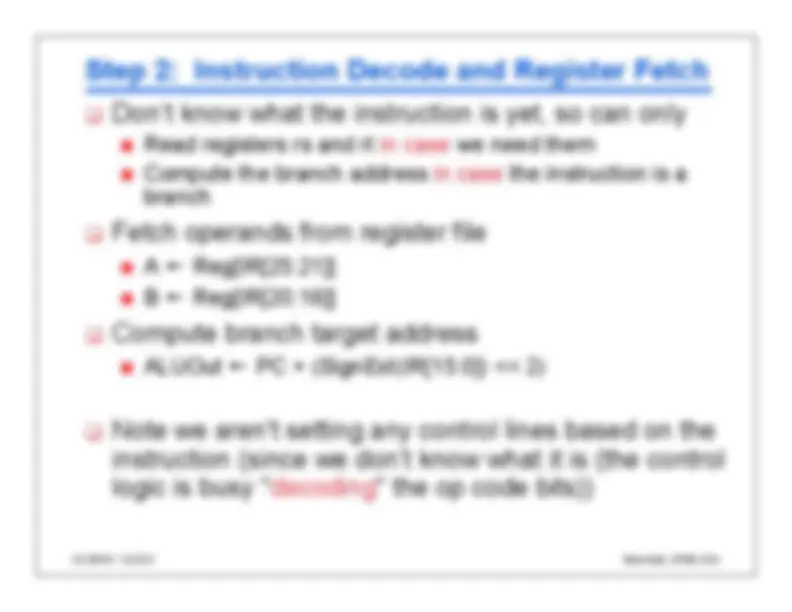
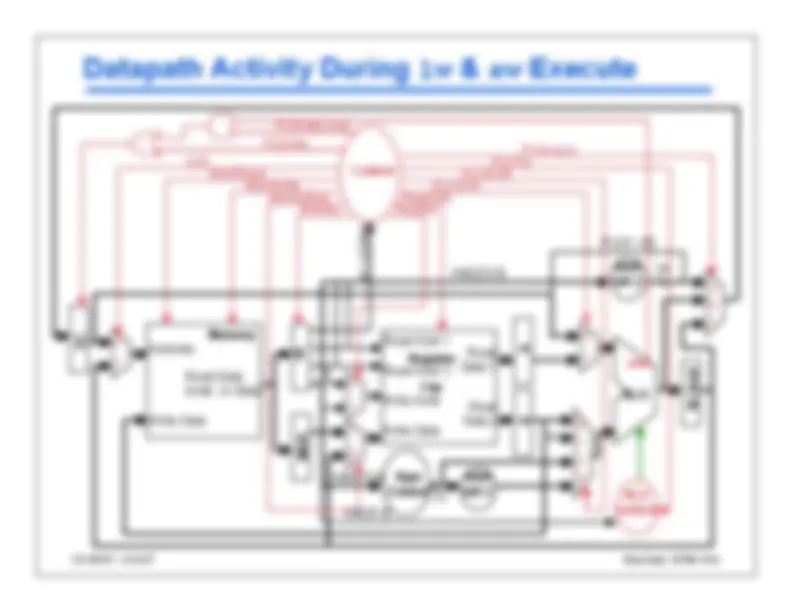
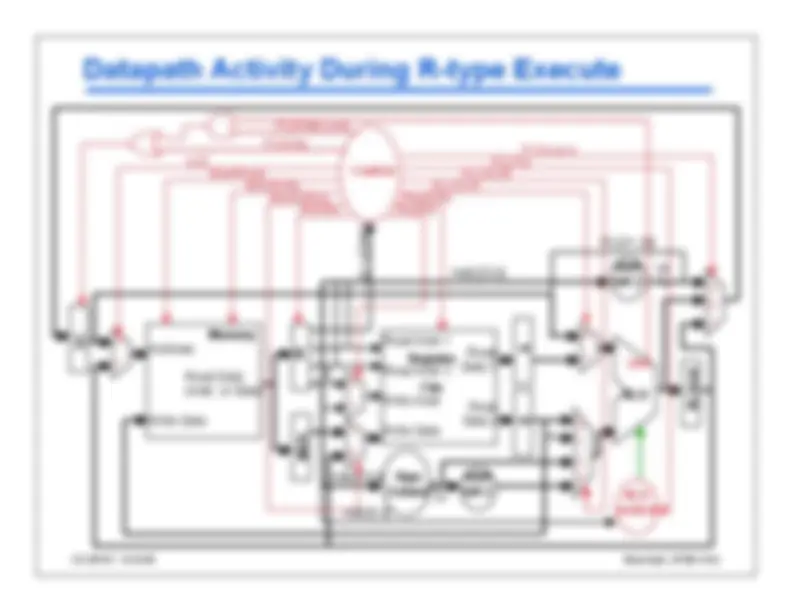
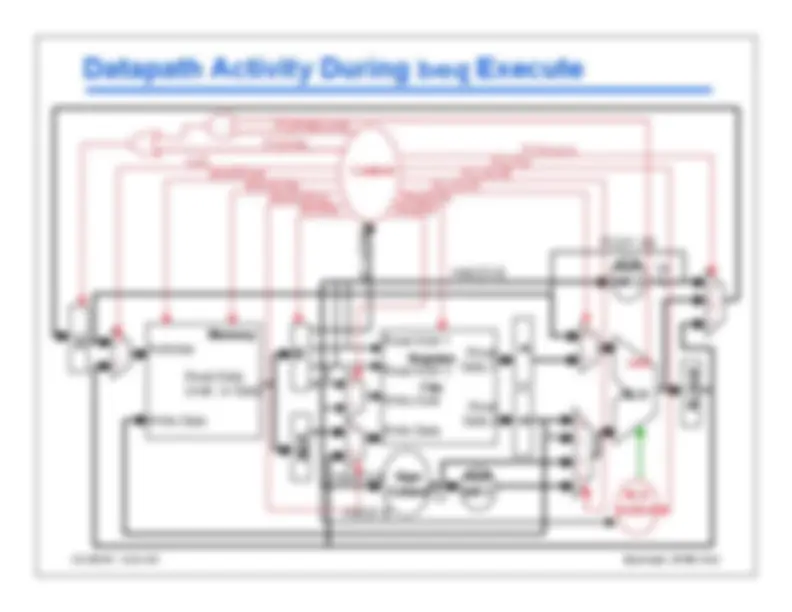
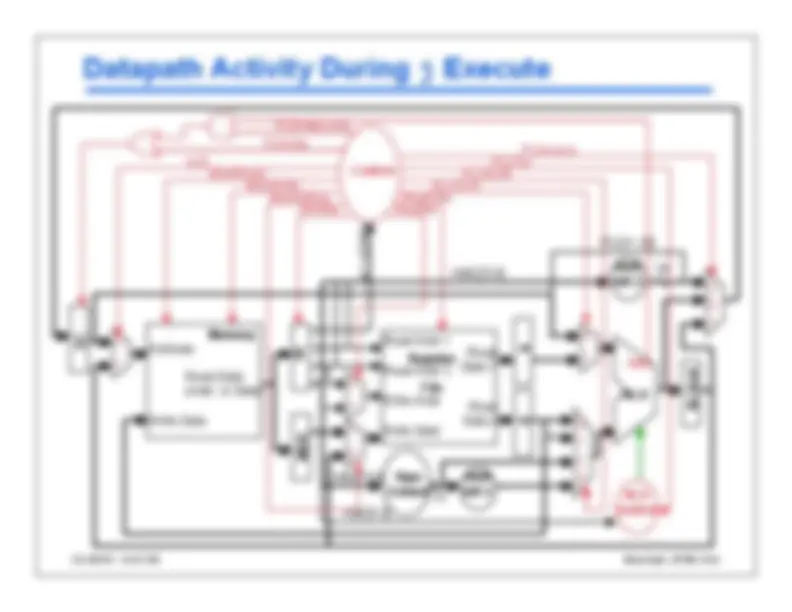
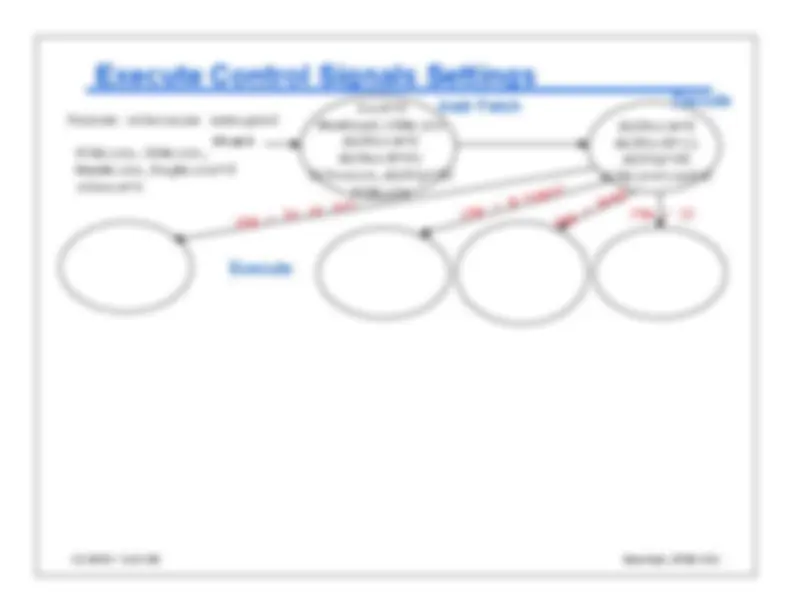
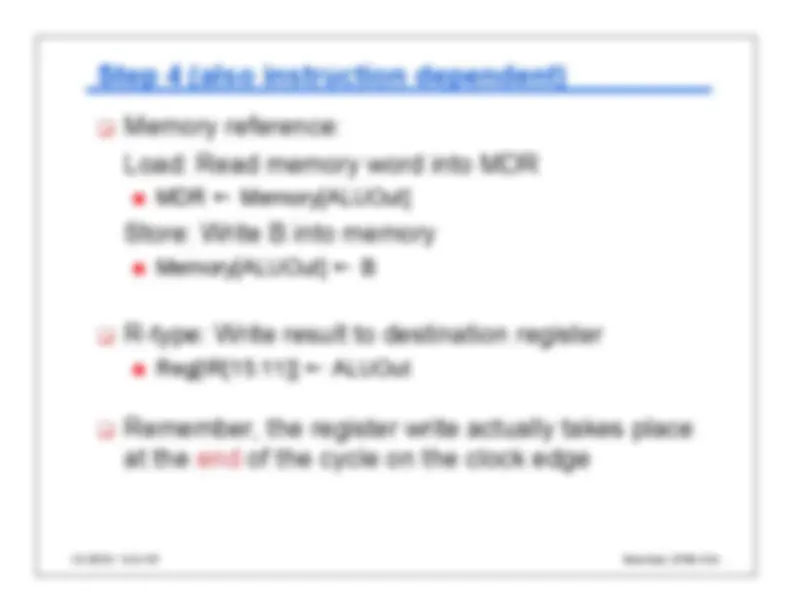
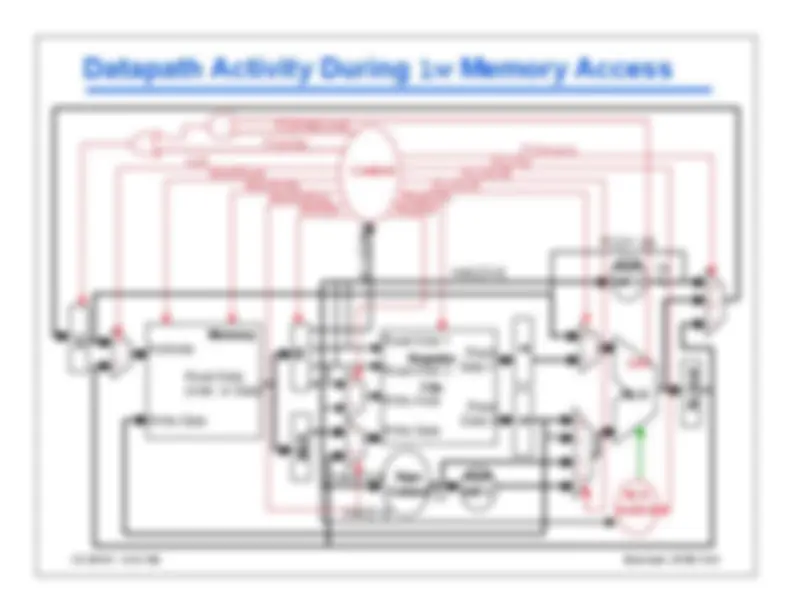
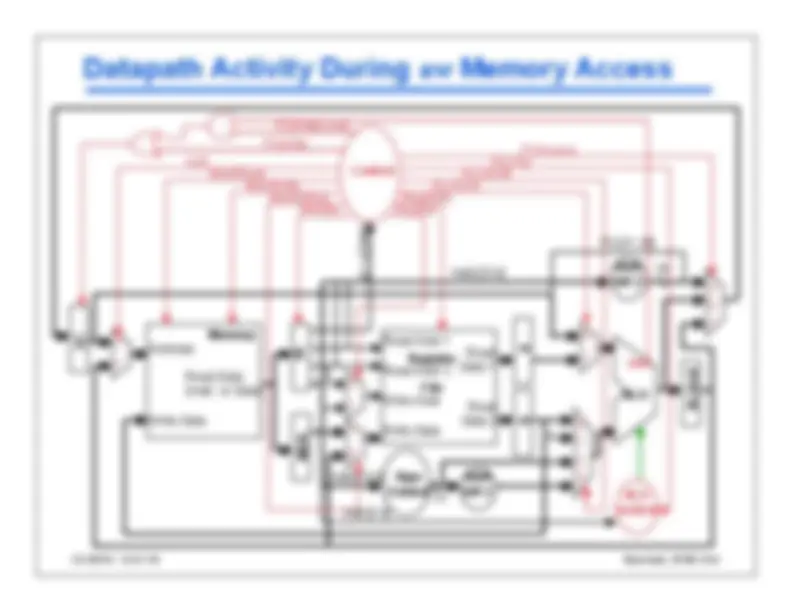
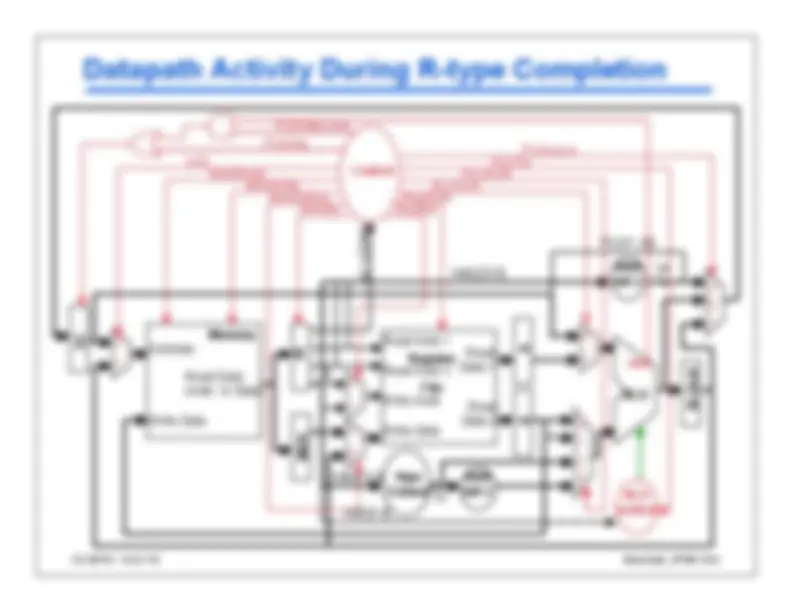
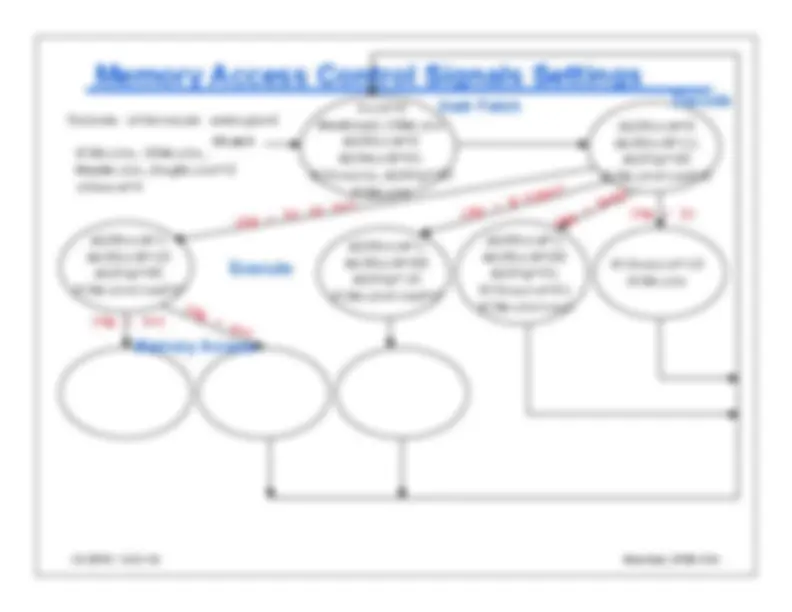
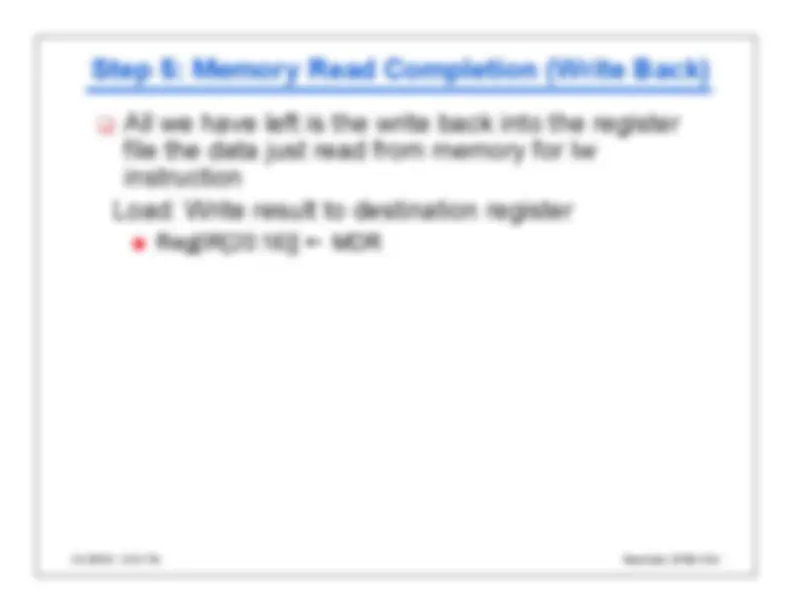
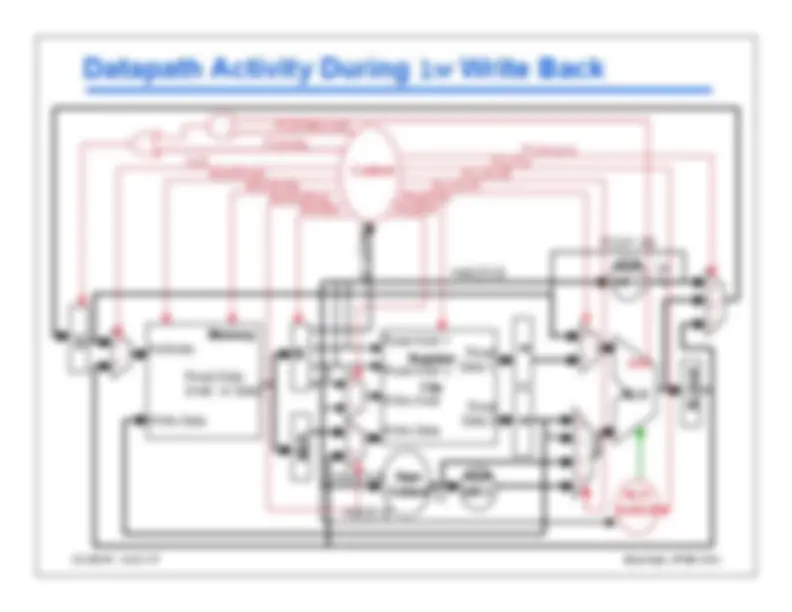
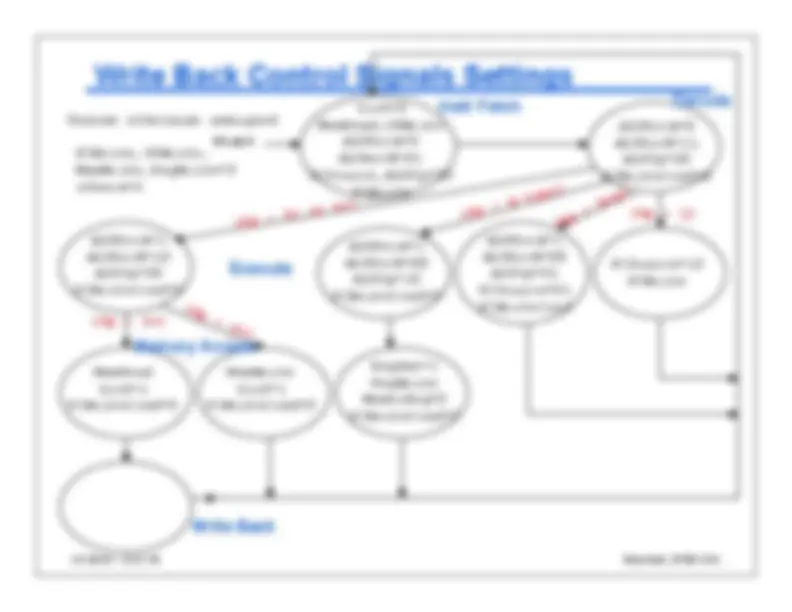
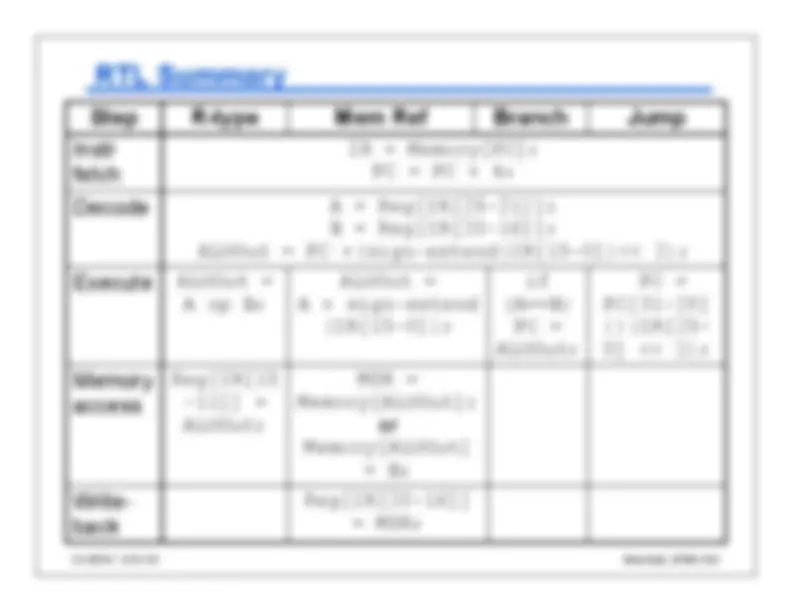
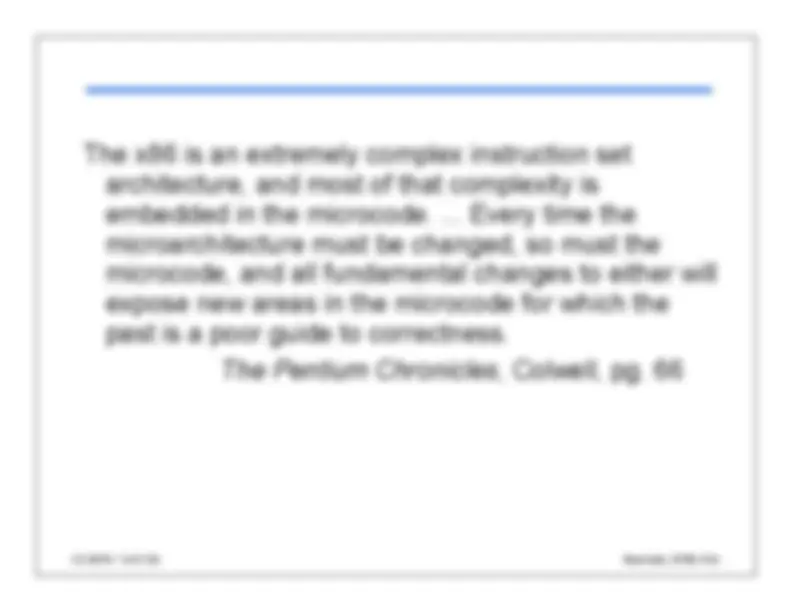
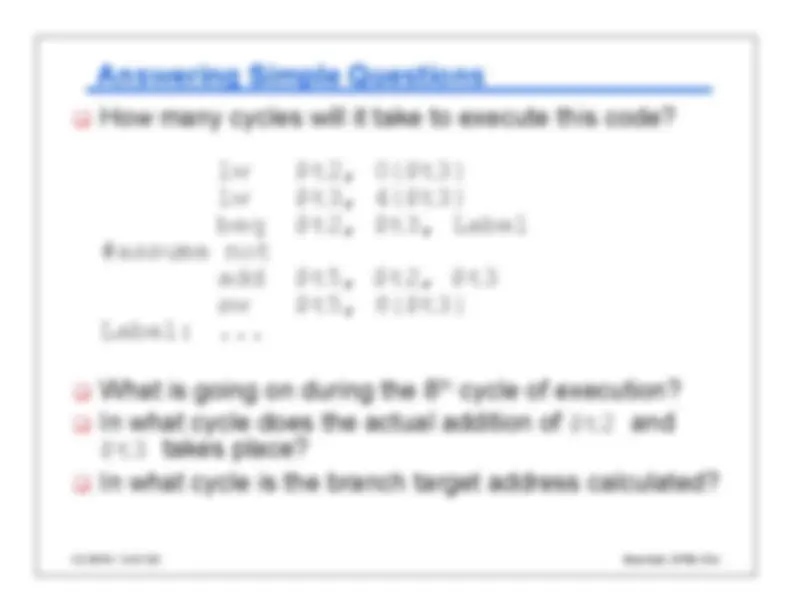
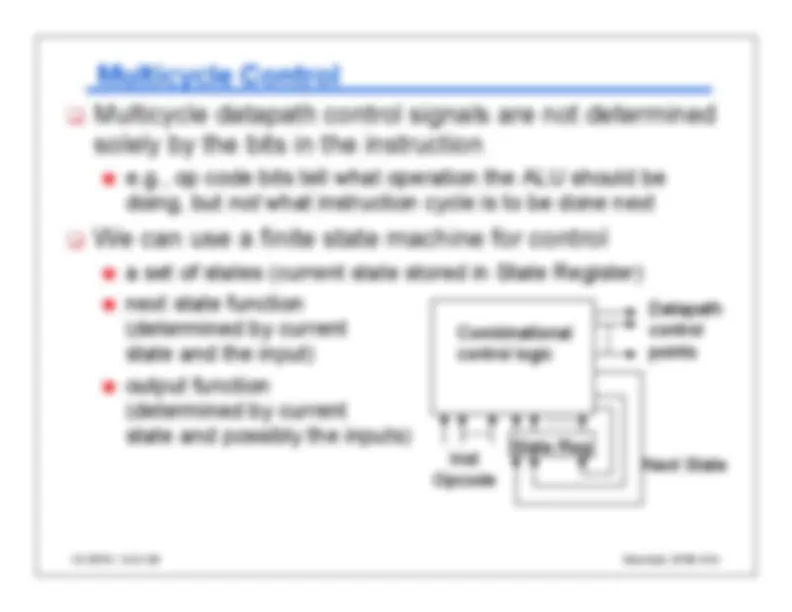
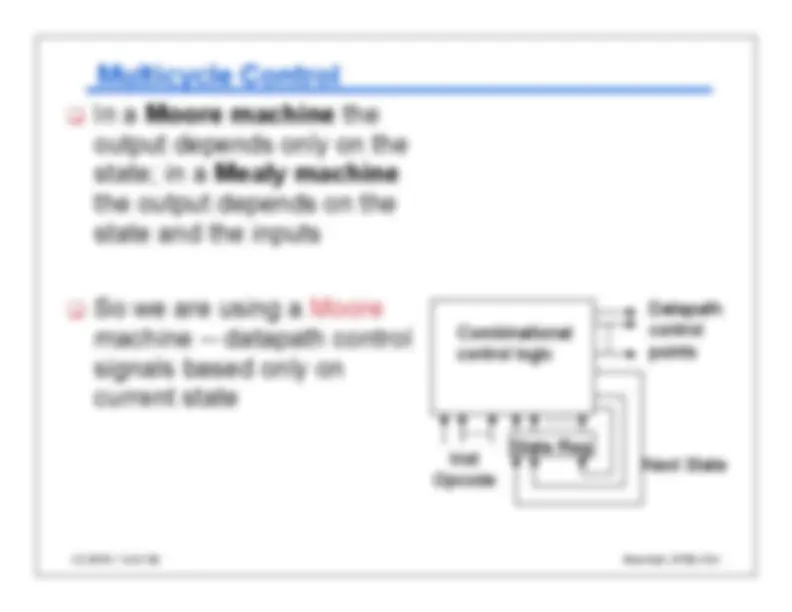
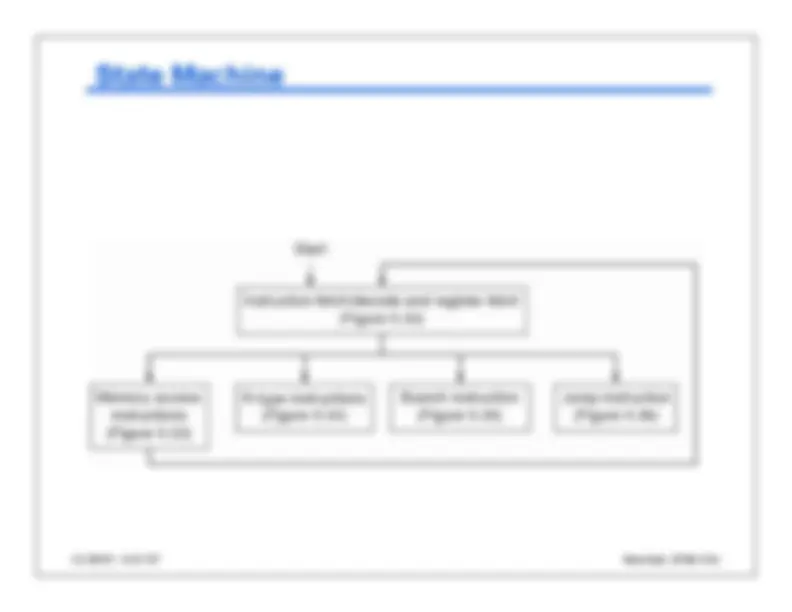
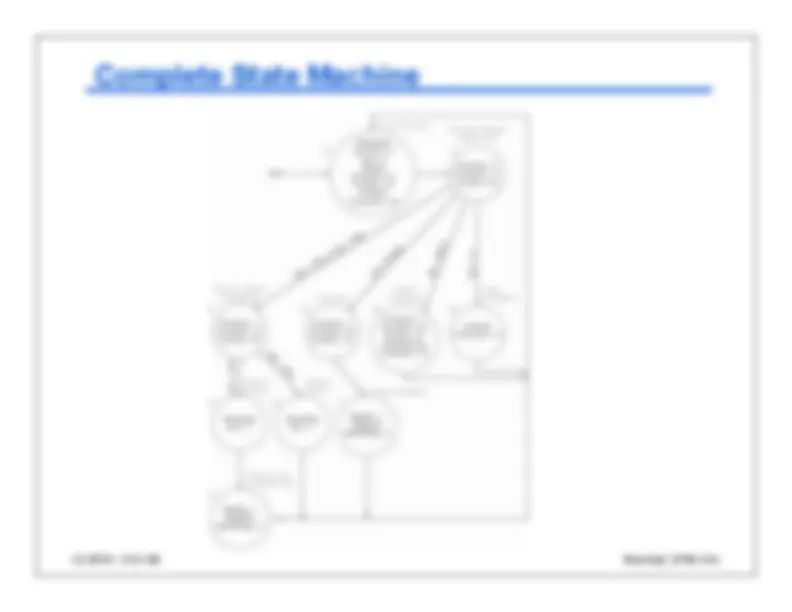
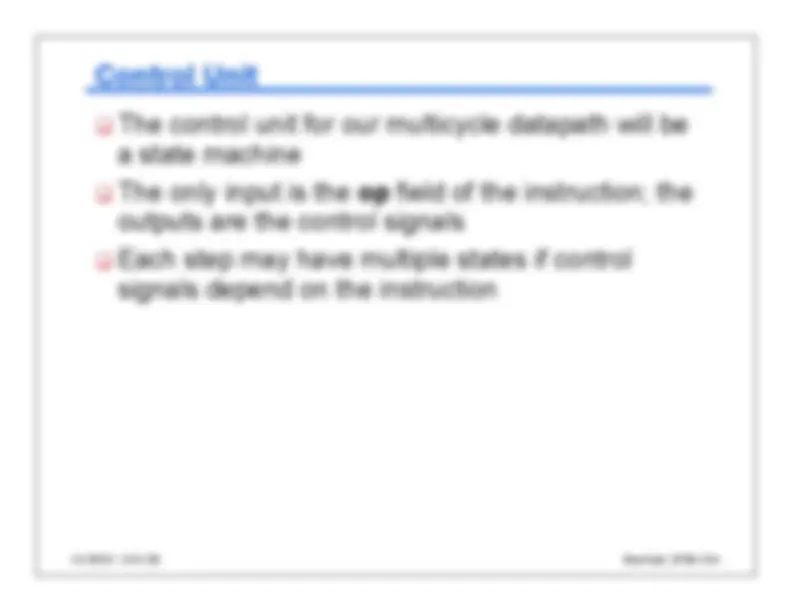
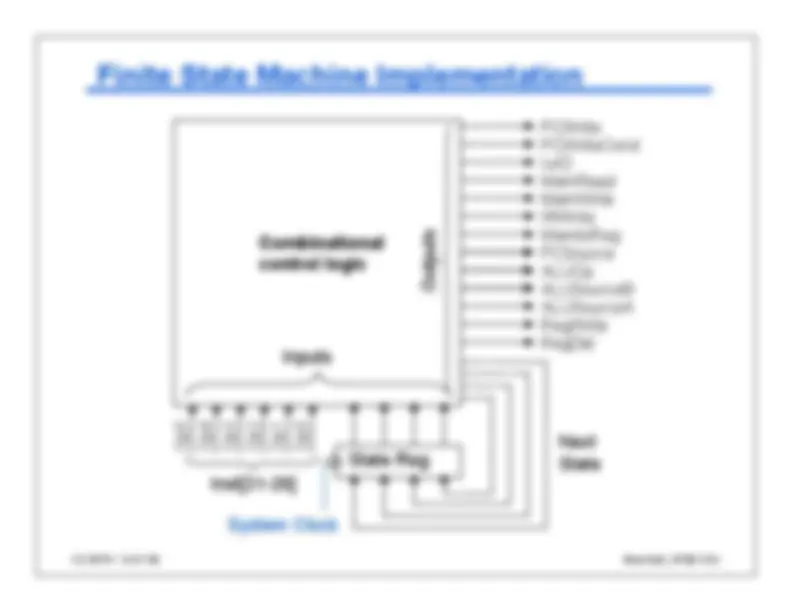
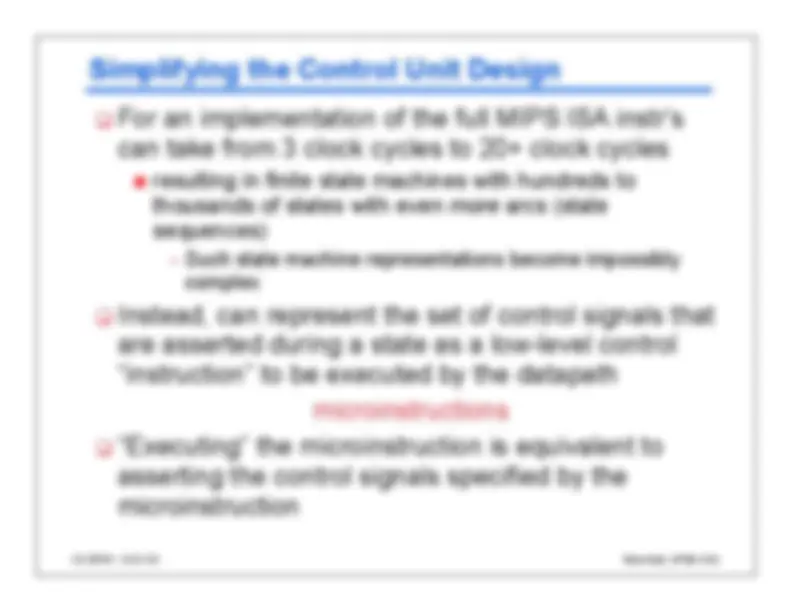
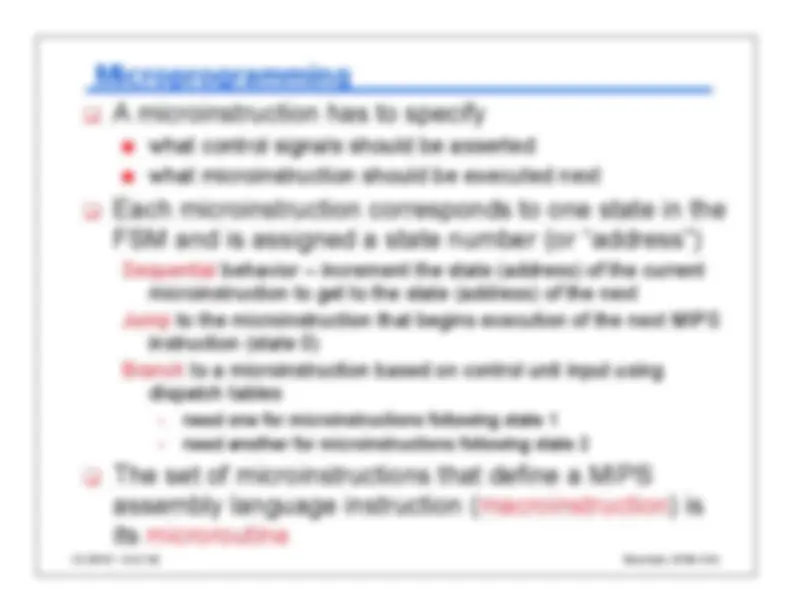
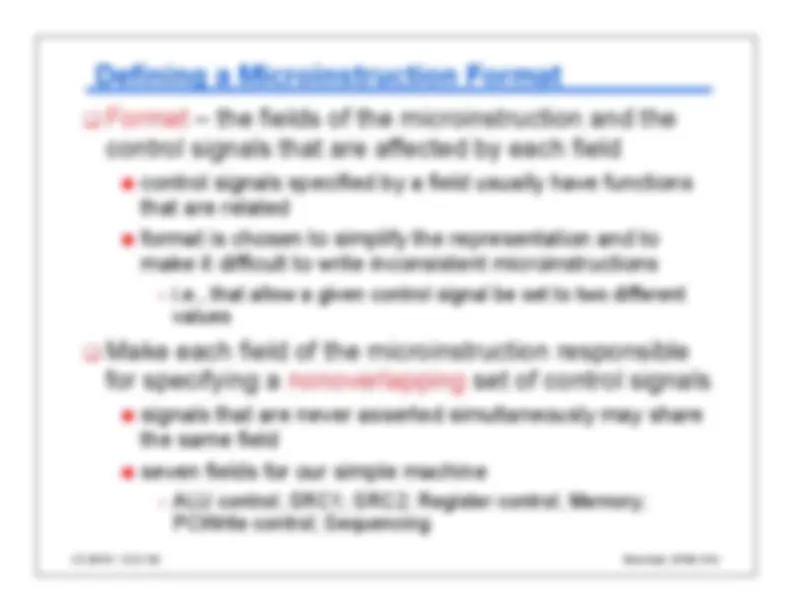
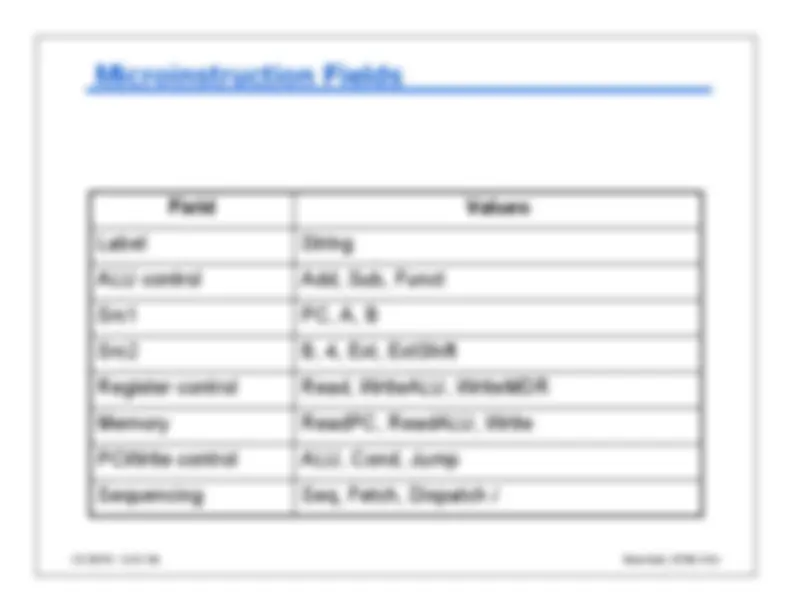
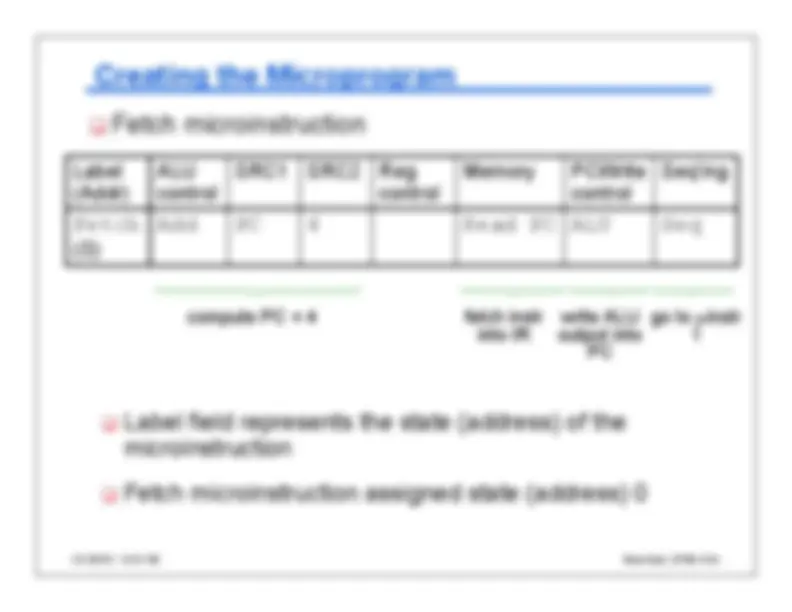
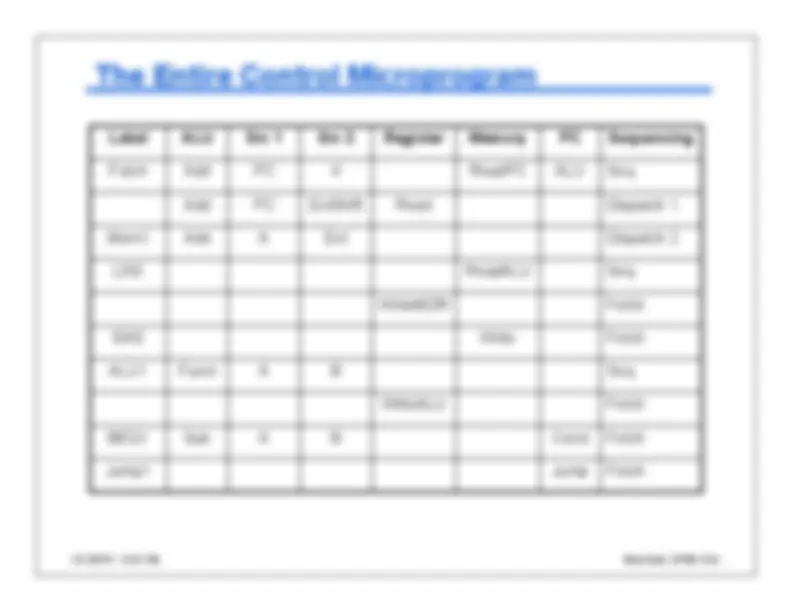
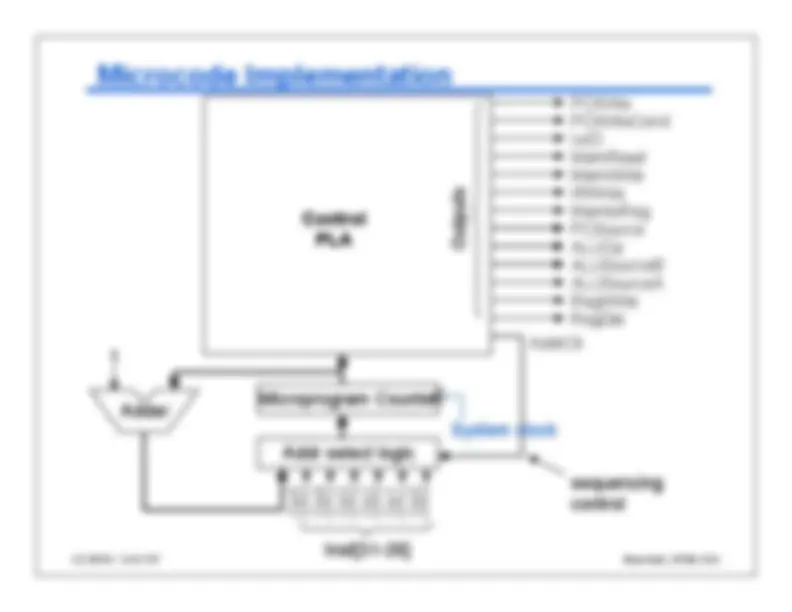
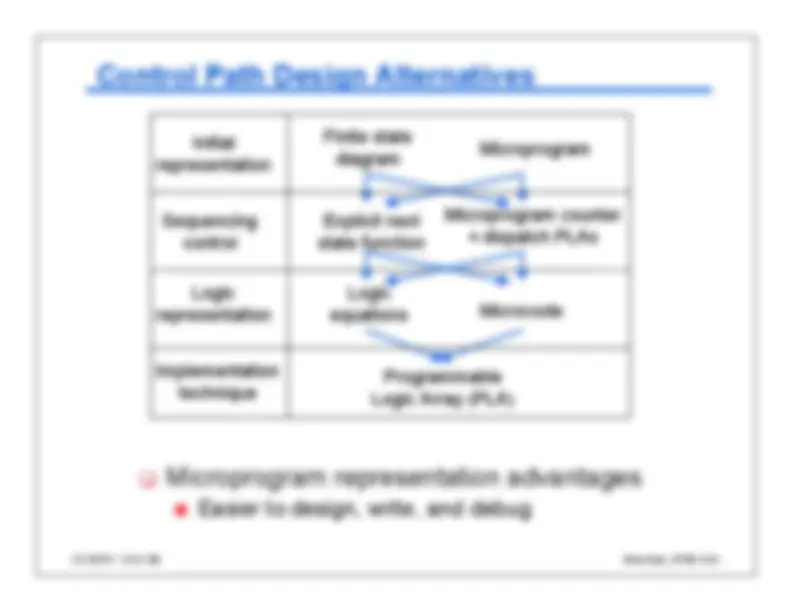
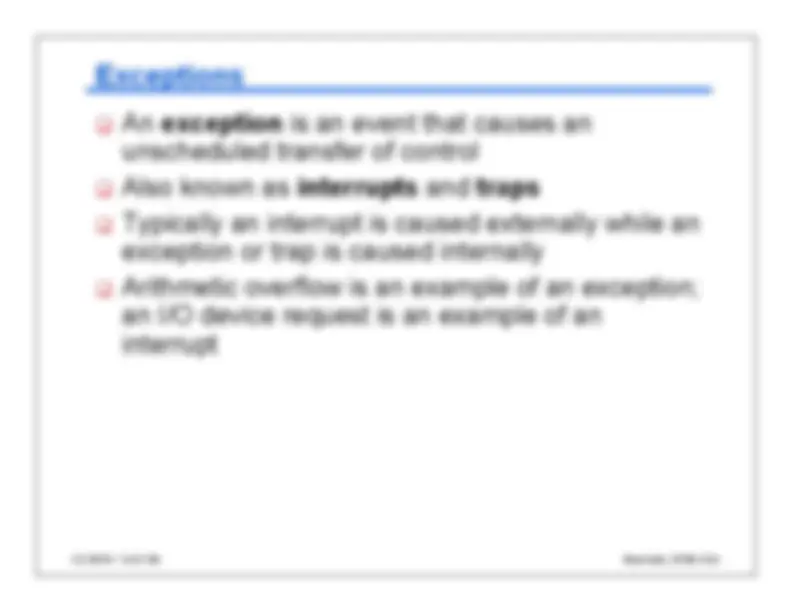
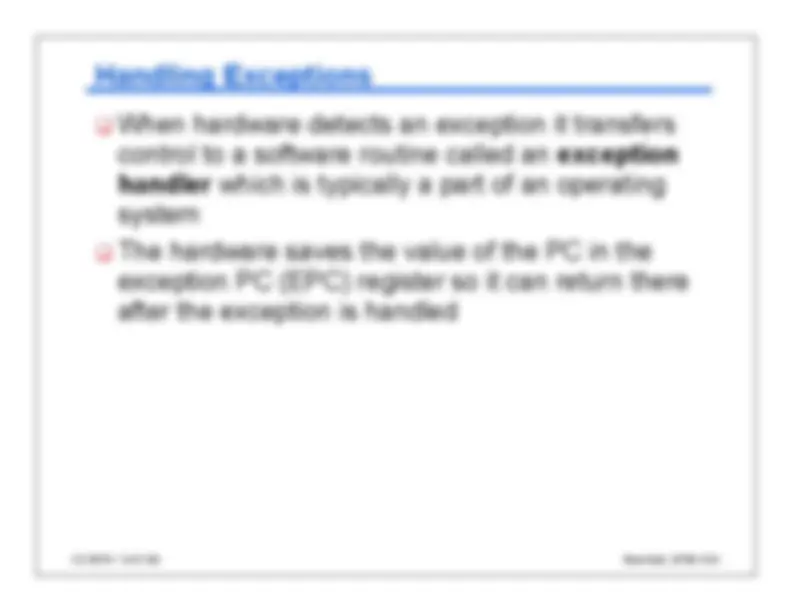
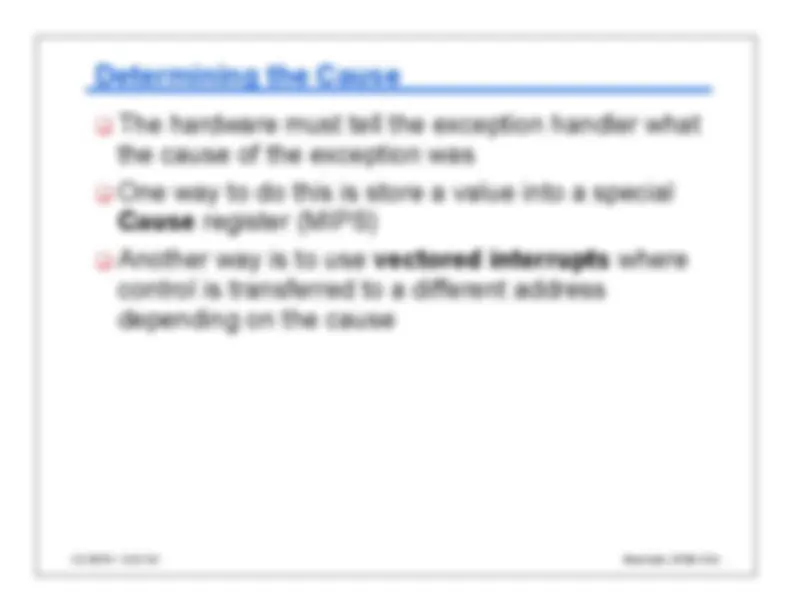
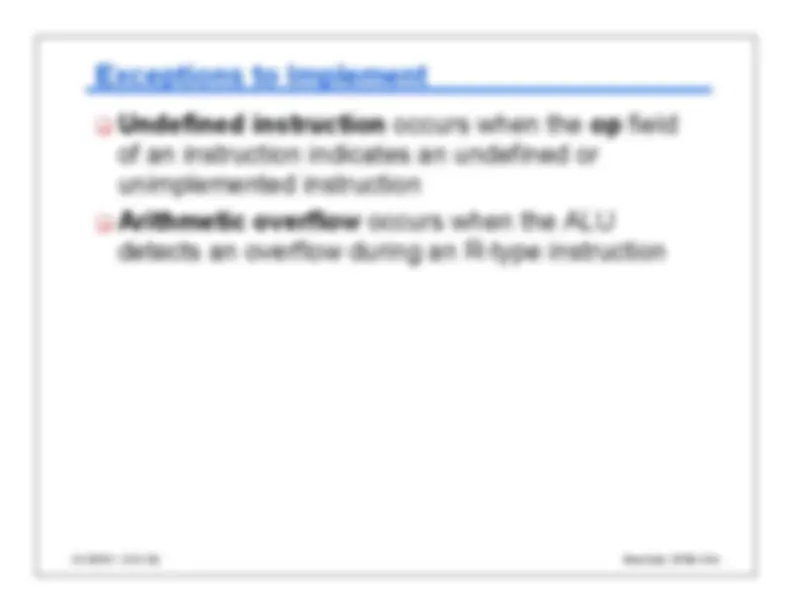
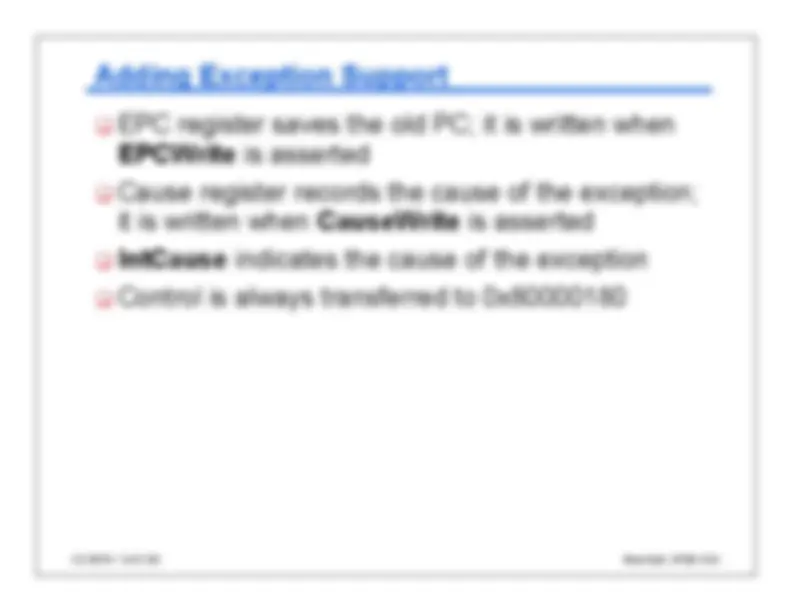
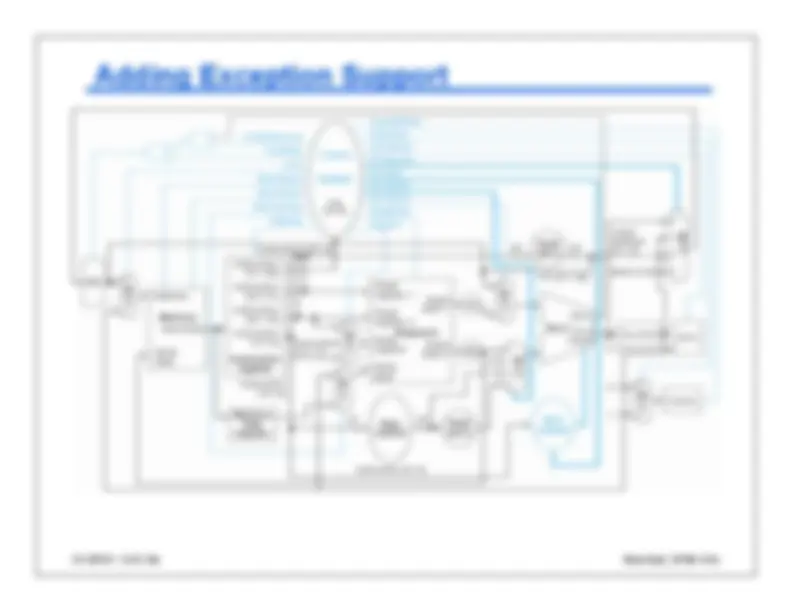
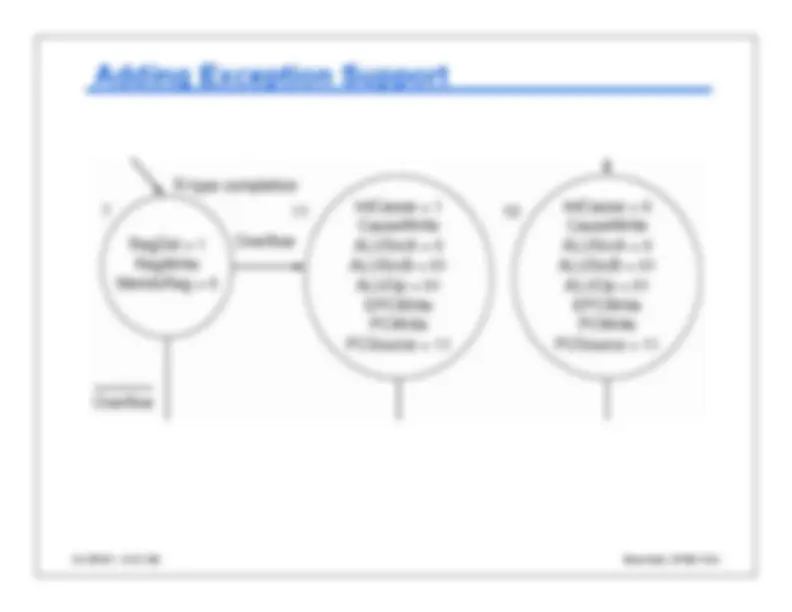

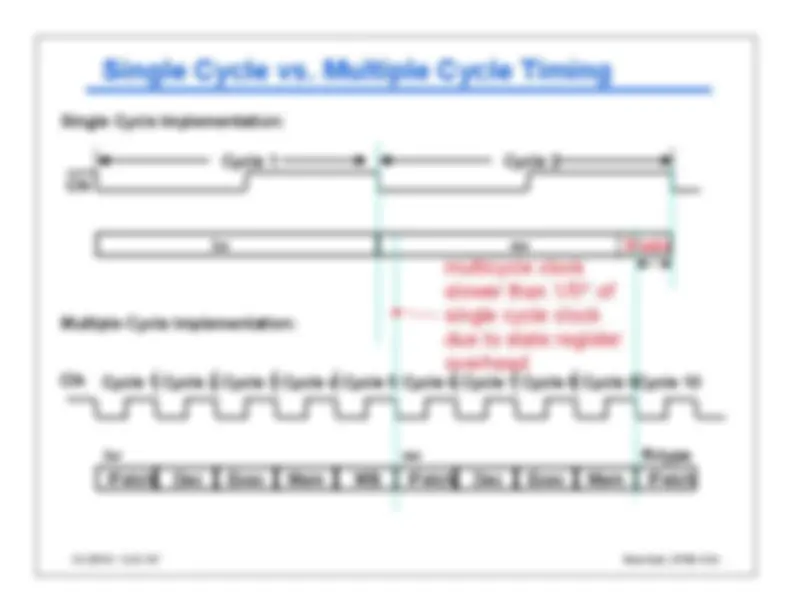


Study with the several resources on Docsity

Earn points by helping other students or get them with a premium plan


Prepare for your exams
Study with the several resources on Docsity

Earn points to download
Earn points by helping other students or get them with a premium plan
Community
Ask the community for help and clear up your study doubts
Discover the best universities in your country according to Docsity users
Free resources
Download our free guides on studying techniques, anxiety management strategies, and thesis advice from Docsity tutors
Material Type: Notes; Class: COMPUTER ARCHITECTURE; Subject: Computer Science; University: Kent State University; Term: Spring 2008;
Typology: Study notes
1 / 56

This page cannot be seen from the preview
Don't miss anything!

















































Address Read Data (Instr. or Data) PC^ Memory Write Data
Read Read AddrAddr (^12) Write Addr
Register File Data 1^ Read Write Data Data 2^ Read^ ALU
IR
MDR
A B^ ALUout
Address Read Data (Instr. or Data) PC^ Memory Write Data
Read Read AddrAddr (^12) Write Addr
Register File Data 1^ Read Write Data Data 2^ Read^ ALU
IR
MDR
A B^ ALUout
MemWrite RegWrite
clock cycle
Address Read Data (Instr. or Data)
PC^ Memory
Write Data
Read Read AddrAddr (^12) Write Addr
Register File Data 1^ Read Write Data Data 2^ Read^ ALU
IR MDR
A B^ ALUout Extend^ Sign left 2^ Shift (^) controlALU
left 2^ Shift
Control^ ALUOp MemWrite MemtoReg IRWrite IorD MemRead^ PCWrite PCWriteCond RegDst^ RegWrite^ ALUSrcA ALUSrcB
zero
PCSource
Instr[5-0]
Instr[25-0]^ PC[31-28]
Instr[15-0]
Instr[31-26]
32
28
Reading from or writing to any of the internal registers, Register File, or the PC occurs (quickly) at the beginning
(for read) or the end of a clock cycle (for write)Reading from the Register File takes ~50% of a clock cycle since it has additional control and access overhead (but reading can be done in parallel with decode) Had to add functional unit input ports (e.g., Memory, ALU) because multiplexors in front of several of the they are now shared by different clock cycles and/or do multiple jobs
All operations occurring in one clock cycle occur in parallel
Address Read Data (Instr. or Data)
PC^ Memory Write Data
Read Read AddrAddr (^12) Write Addr
Register File Data 1^ Read Write Data Data 2^ Read^ ALU
IR MDR
A B^ ALUout Extend^ Sign left 2^ Shift (^) controlALU
left 2^ Shift
Control^ ALUOp MemWrite MemtoReg IRWrite IorD MemRead^ PCWrite PCWriteCond RegDst^ RegWrite^ ALUSrcA ALUSrcB
zero
PCSource
Instr[5-0]
Instr[25-0]^ PC[31-28]
Instr[15-0]
Instr[31-26]
32
28
Address Read Data (Instr. or Data)
PC^ Memory Write Data
Read Read AddrAddr (^12) Write Addr
Register File Data 1^ Read Write Data Data 2^ Read^ ALU
IR MDR
A B^ ALUout Extend^ Sign left 2^ Shift (^) controlALU
left 2^ Shift
Control^ ALUOp MemWrite MemtoReg IRWrite IorD MemRead^ PCWrite PCWriteCond RegDst^ RegWrite^ ALUSrcA ALUSrcB
zero
PCSource
Instr[5-0]
Instr[25-0]^ PC[31-28]
Instr[15-0]
Instr[31-26]
32
28
Address Read Data (Instr. or Data)
PC^ Memory Write Data
Read Read AddrAddr (^12) Write Addr
Register File Data 1^ Read Write Data Data 2^ Read^ ALU
IR MDR
A B^ ALUout Extend^ Sign left 2^ Shift (^) controlALU
left 2^ Shift
Control^ ALUOp MemWrite MemtoReg IRWrite IorD MemRead^ PCWrite PCWriteCond RegDst^ RegWrite^ ALUSrcA ALUSrcB
zero
PCSource
Instr[5-0]
Instr[25-0]^ PC[31-28]
Instr[15-0]
Instr[31-26]
32
28
Address Read Data (Instr. or Data)
PC^ Memory Write Data
Read Read AddrAddr (^12) Write Addr
Register File Data 1^ Read Write Data Data 2^ Read^ ALU
IR MDR
A B^ ALUout Extend^ Sign left 2^ Shift (^) controlALU
left 2^ Shift
Control^ ALUOp MemWrite MemtoReg IRWrite IorD MemRead^ PCWrite PCWriteCond RegDst^ RegWrite^ ALUSrcA ALUSrcB
zero
PCSource
Instr[5-0]
Instr[25-0]^ PC[31-28]
Instr[15-0]
Instr[31-26]
32
28